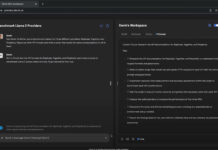Flipped classrooms are popping up all over the U.S..
And while MOOCs might be controversial, the flipped classroom – one where students watch teachers’ lectures at home or on-the-go and leave assignments and projects for class – is a strategy that nearly everyone agrees with.
“Many people are holding the flipped classroom model as a potential model of how to use technology to humanize the classroom,” says The New York Times in an article.
One of the institutions that has taken advantage of flipping is the Clintondale High School, in Detroit.
- “Flipping a classroom changes several things. One is what students do at home. At first, teachers assigned 20-minute videos, but they now make them shorter — six minutes, even three minutes. That promotes re-watching. The school also uses audio files and readings as homework, and uses videos from the Khan Academy, TED and other sources. Many students do not ask questions in class, worried they will look dumb. But they can watch a video over and over without fear,” writes Tina Rosenberg expert in education and best-selling author.
- “It’s actually more time for kids to do higher-order thinking and hands-on projects. Instead of presenting the information in class and having students work on projects at home, where they don’t necessarily have support, here in class, one-on-one or in small groups, I can help them immediately. Students can also help each other, a process that benefits both the advanced and less advanced learners,” explains another expert.





















